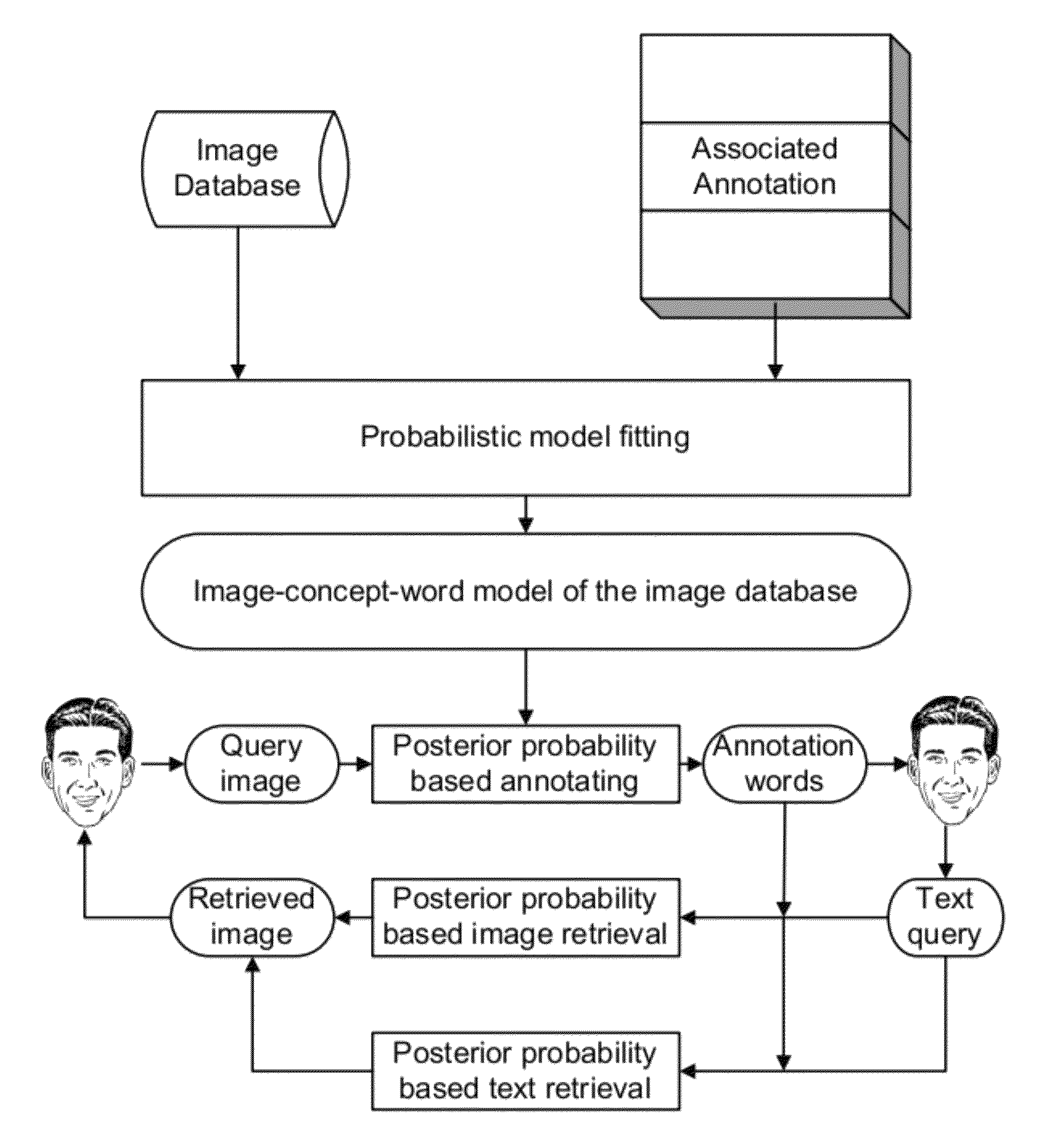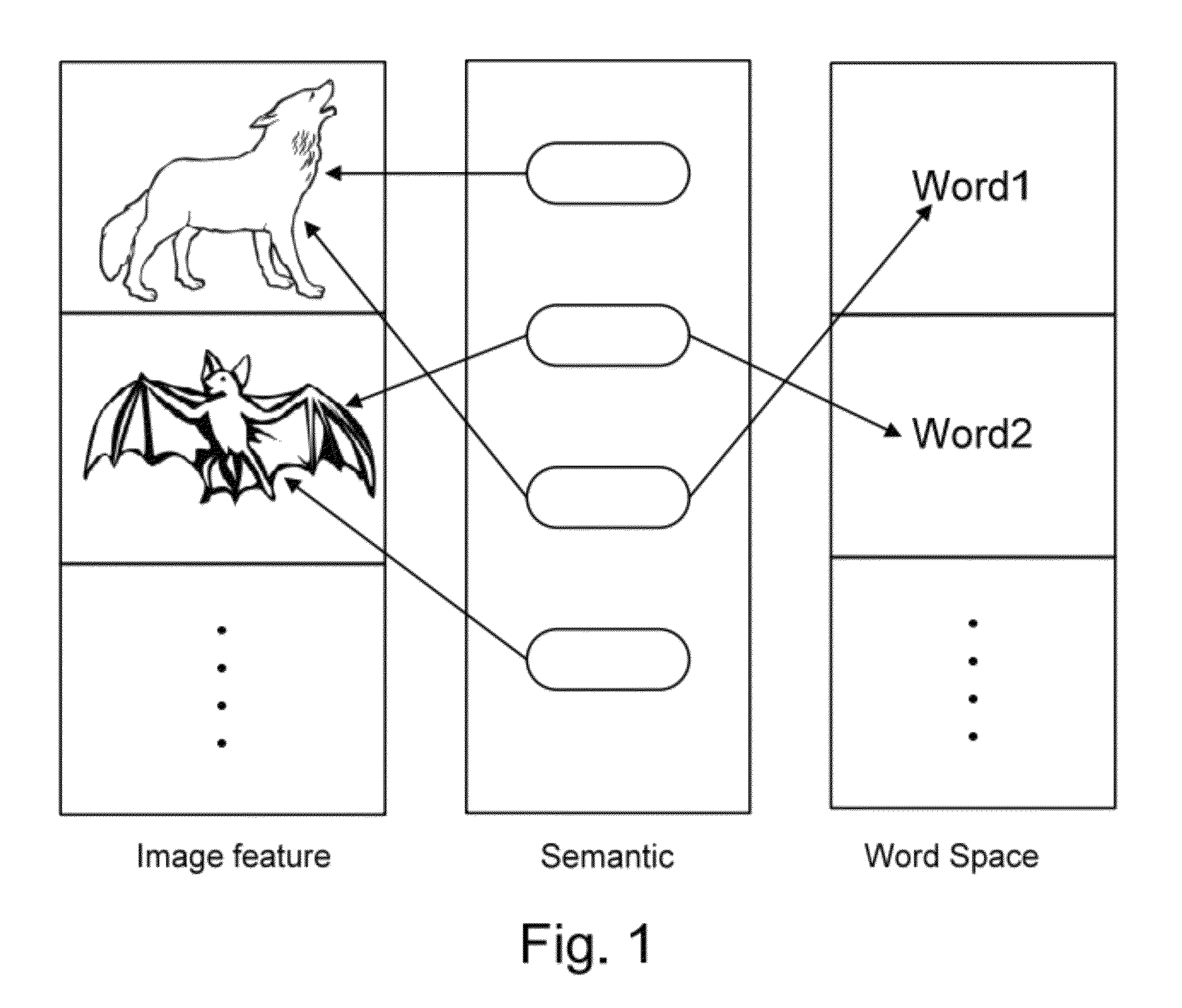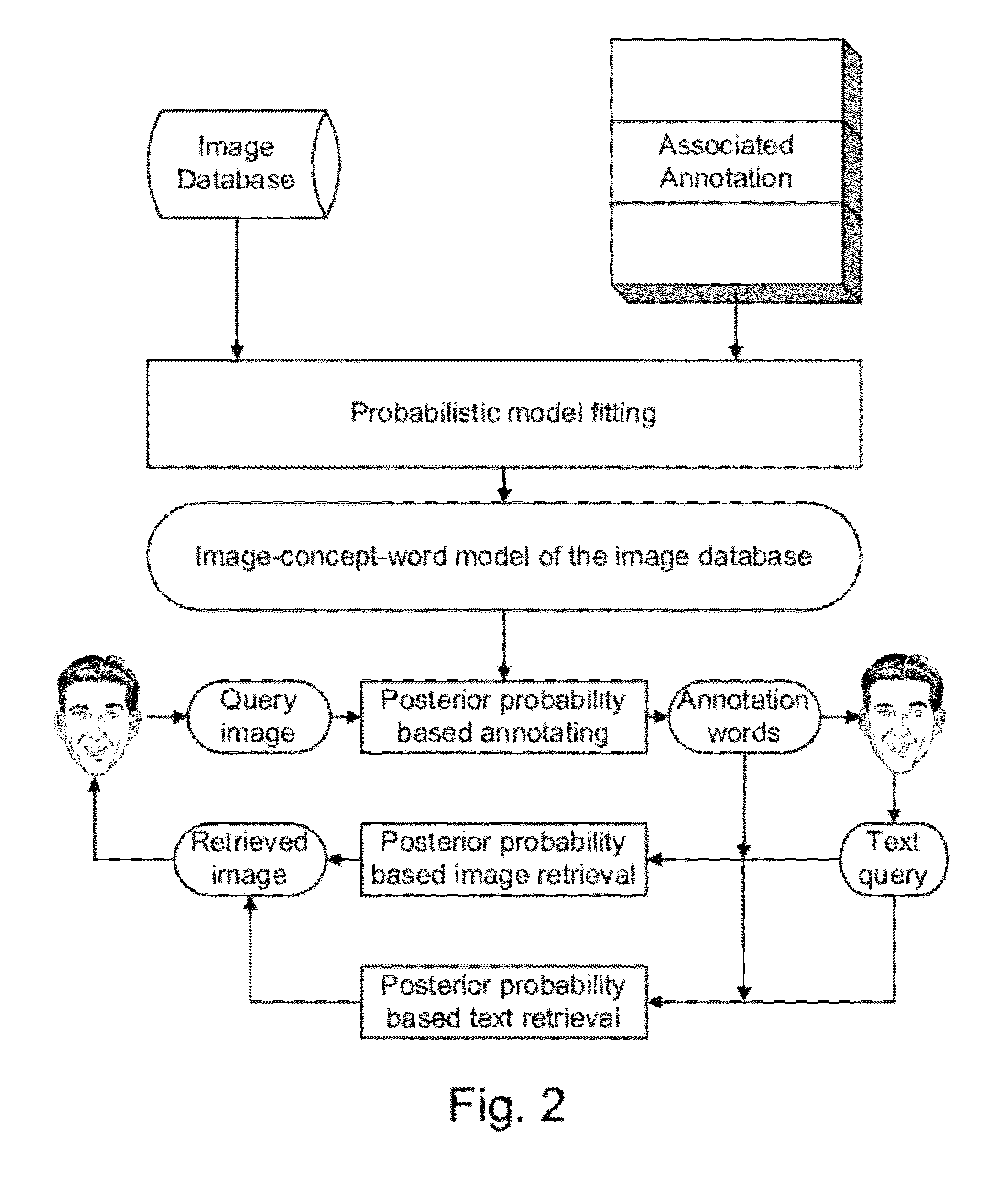System and method for image annotation and multi-modal image retrieval using probabilistic semantic models comprising at least one joint probability distribution
a probabilistic semantic model and image technology, applied in the field of system and method for image annotation and multi-modal image retrieval using probabilistic semantic models, can solve the problems of insufficient use of image features only to find similar images, and the assumption made in alips that the annotation words are semantically exclusive may not be necessarily valid in natur
- Summary
- Abstract
- Description
- Claims
- Application Information
AI Technical Summary
Benefits of technology
Problems solved by technology
Method used
Image
Examples
example 1
[0082]A prototype system was implemented in accordance with the framework set forth above. The architecture of the prototype system is illustrated in FIG. 2, where the “image database” contains the training images as well as testing images; the “associated annotation” contains all the training annotation words. The process of probabilistic model fitting to generate the image-concept-word model (the shaded area in FIG. 2) is processed offline; the text querying and image querying based on the Bayesian framework (the unshaded area in FIG. 2) are performed online.
[0083]The system supported both image-to-text (i.e., image annotation) and text-to-image retrievals. As shown in FIG. 2, the image-to-image querying also can be conducted in the system by incorporating the existing commercial text-based image search engines, i.e., the obtained annotation words for the query image are input into an text-based image search engine to retrieve images. Alternatively, the image-to-image retrieval ma...
example 2
Dataset and Feature Sets
[0089]It has been noted that the data sets used in most recent automatic image annotation systems [1, 10, 11, 17] fail to capture the difficulties inherent in many real image databases. Thus, publications reporting performance based on artificially constrained data sets may not be comparable to those using less constrained or unconstrained data sets.
[0090]The commonly used Corel database, for example, is much easier for image annotation and retrieval than the unconstrained image data set due to its limited semantics conveyed and relatively small variations of visual contents. The typical small scales of the datasets reported in the literature are far away from being realistic in all the real world applications.
[0091]The prototype system according to the present invention was therefore evaluated on a collection of large-scale real world data automatically crawled from the Web, as an example of a minimally constrained image data set. The images and the surround...
PUM
 Login to View More
Login to View More Abstract
Description
Claims
Application Information
 Login to View More
Login to View More - R&D
- Intellectual Property
- Life Sciences
- Materials
- Tech Scout
- Unparalleled Data Quality
- Higher Quality Content
- 60% Fewer Hallucinations
Browse by: Latest US Patents, China's latest patents, Technical Efficacy Thesaurus, Application Domain, Technology Topic, Popular Technical Reports.
© 2025 PatSnap. All rights reserved.Legal|Privacy policy|Modern Slavery Act Transparency Statement|Sitemap|About US| Contact US: help@patsnap.com



